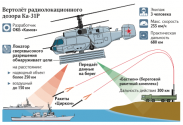You are using an out of date browser. It may not display this or other websites correctly.
You should upgrade or use an alternative browser.
You should upgrade or use an alternative browser.
Russian Military News, Reports, Data, etc.
- Thread starter tphuang
- Start date
Hi, so with 10/12 in numbers how long will it take them to put these in airThey need at least twelve of them asap to cover the west side.
approximately 1 to 2 years or more
thank you
Will take years... way more than 2 years probably. Don't know how many active A-50/A-50U they have left but with most of them built more than 30years ago, probably not a lot left of the 40 they had.Hi, so with 10/12 in numbers how long will it take them to put these in air
approximately 1 to 2 years or more
thank you
Tests of an improved prototype of the heavy robotic demining complex MGR-4 "Shmel" took place in Russia. The robot minesweeper MGR-4 was developed by the High-Precision Complexes enterprises: Kovrov Electromechanical Plant (KEMZ) and VNII Signal. The mine-sapping robot MGR-4 was created on the basis of the Ant-1000 mini-loader; unification with the loader makes it possible to reduce the cost of serial production of the robot. The main purpose of the MGR-4 robot is to detect and eliminate anti-personnel mines.
The complex is controlled at a range of 1000 meters, it is provided by the Prometheus control system developed by the VNII Signal, which is also used in Russian combat vehicles. The robot is equipped with a hydraulically driven winch and a chain hammer trawl. The modernized model of the MGR-4 robotic complex uses a mine trawl with an increased soil loosening depth of up to 250 mm, the shape of the impact hammers has been replaced, and the length of the chain has been adjusted. A new scheme for moving the trawl above the ground has been introduced; when the trawl is in a floating position, it bends around the terrain. The mass of the MGR-4 “Shmelya” is 4 tons, the speed of movement when clearing mines is 1 km/h, the width of the cleared surface with this trawl is 2.2 meters.
The complex is controlled at a range of 1000 meters, it is provided by the Prometheus control system developed by the VNII Signal, which is also used in Russian combat vehicles. The robot is equipped with a hydraulically driven winch and a chain hammer trawl. The modernized model of the MGR-4 robotic complex uses a mine trawl with an increased soil loosening depth of up to 250 mm, the shape of the impact hammers has been replaced, and the length of the chain has been adjusted. A new scheme for moving the trawl above the ground has been introduced; when the trawl is in a floating position, it bends around the terrain. The mass of the MGR-4 “Shmelya” is 4 tons, the speed of movement when clearing mines is 1 km/h, the width of the cleared surface with this trawl is 2.2 meters.
At the HeliRussia-2024 exhibition in Moscow, Belarus showed the second version of the Hunter drone helicopter, developed by KB Unmanned Helicopters. The unmanned, upgraded Hunter attack helicopter is designed to engage UAVs, naval drones, personnel, armored vehicles and reconnaissance. It is possible that Russia will purchase it, since the search for maritime drones is now important for the Russian army. The UAVHELI HD-300 system is installed on the UAV, which includes an automatic tracking system, an inertial module, a laser range finder, a TV camera and a thermal imager. The UAV is equipped with an on-board defense system, with an radiation warning station and a device for releasing false thermal targets. The Hunter UAV is armed with a turret with a 7.62 mm machine gun, two launchers for eight unguided missiles or 16 aerial bombs weighing 2.5 kg each. The helicopter is equipped with a 268 hp internal combustion engine. The maximum take-off weight of the helicopter is 750 kg, the payload is 200 kg, the helicopter reaches speeds of up to 190 km/h, at altitudes of up to 3500 meters, flight endurance of up to 6 hours.
Satellite image from port of Havana, Cuba, where the Russian warship Admiral Gorshkov and nuclear submarine Kazan are docked
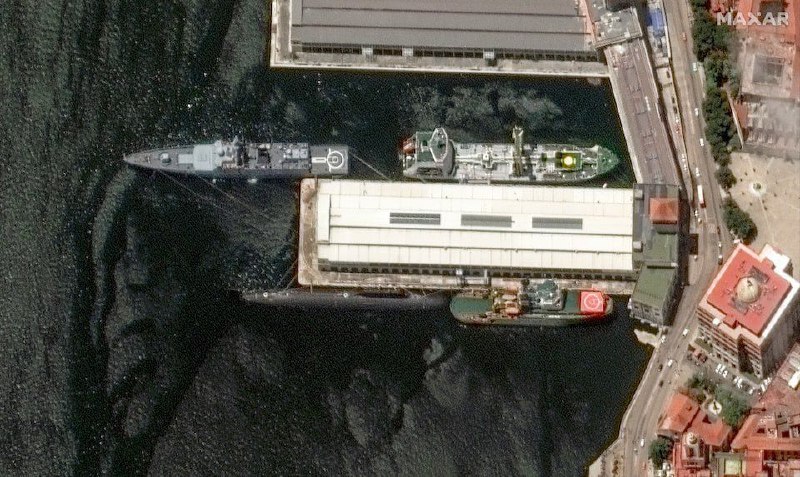



The electronic warfare tracked drone REBovets Valli was shown in Russia. Russian developers showed the first tracked electronic warfare platform "REBovets Valley", designed to combat FPV drones. The company "PPSh Laboratory" placed the electronic warfare "Fumigator" on a tracked chassis, more details about it in the link to the video in the comments to the video. One might say it turned out to be a huge ground-based electronic warfare drone.
The developer says that several communication channels are used and electronic warfare suppresses everything that is needed. Technical details and what kind of chassis are unknown, but judging by the size of the electronic warfare drone, this installation has many amplifiers and can suppress the frequencies of most FPV drones. The robotic platform "EW Valli" has powerful batteries, which allows it and the electronic warfare equipment to operate for a very long time. Details in the video.
The developer says that several communication channels are used and electronic warfare suppresses everything that is needed. Technical details and what kind of chassis are unknown, but judging by the size of the electronic warfare drone, this installation has many amplifiers and can suppress the frequencies of most FPV drones. The robotic platform "EW Valli" has powerful batteries, which allows it and the electronic warfare equipment to operate for a very long time. Details in the video.
The Russians developed their own four-tube NVGs, through reverse engineering with the Ukrainians' GPNVGs, which they learned. Developed by Trinity Arms in partnership with other state-owned companies.
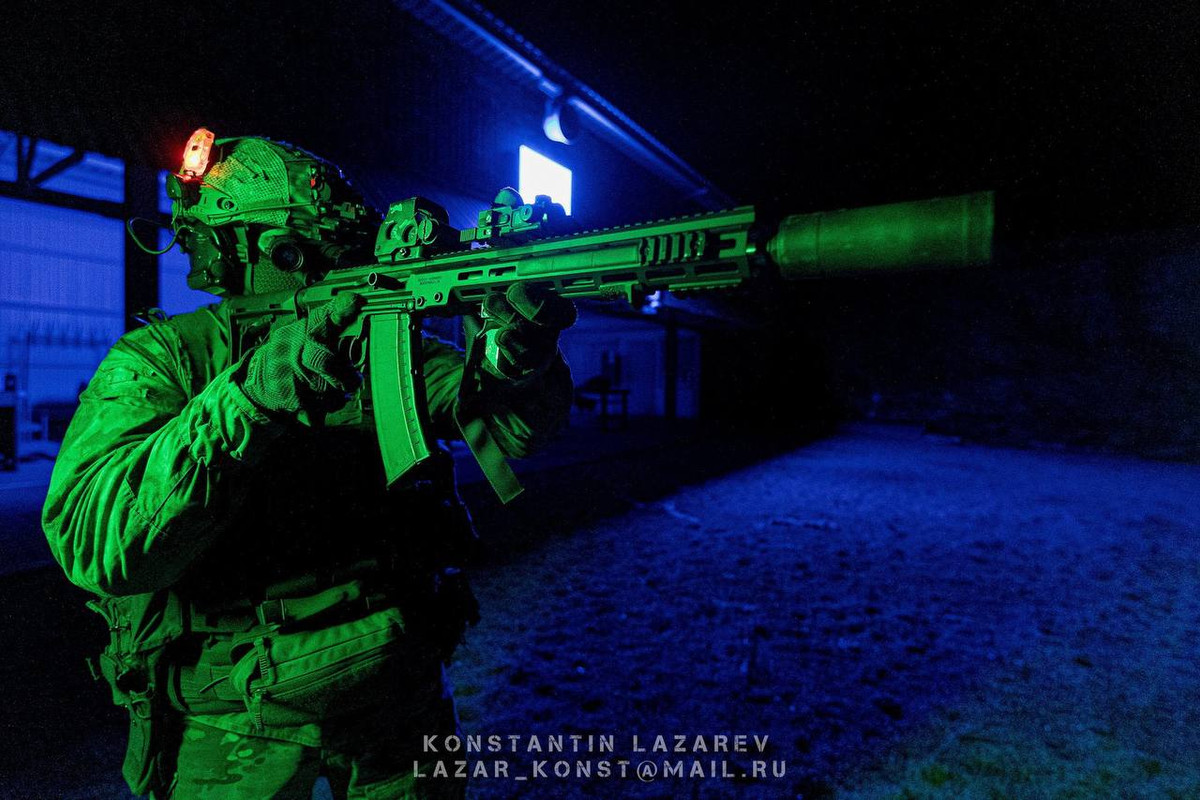

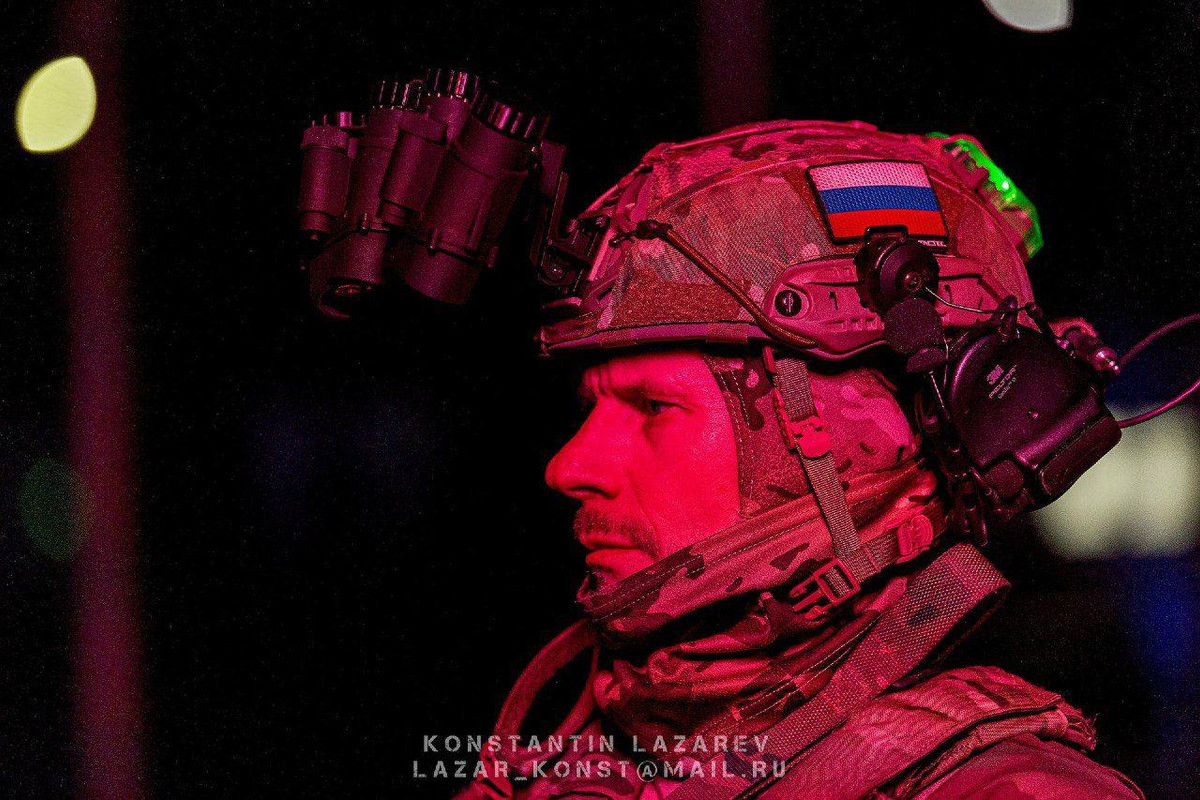
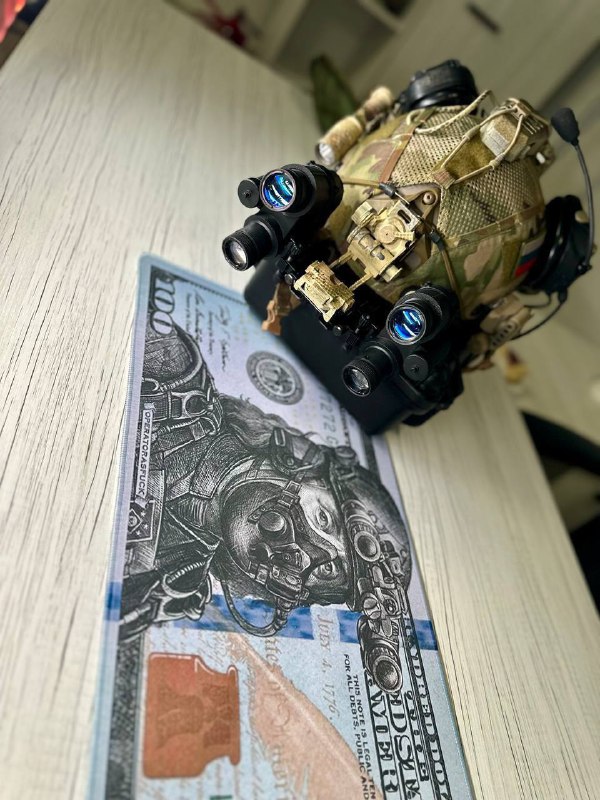




Lethe
Captain
Just a quick update on Russia's nuclear-powered icebreaker programs:
Pr. 22220 #4 Yakutia is still intended to be delivered by end 2024, #5 Chukotka by end 2026.
Future Pr. 22220 units #6 and #7 have been renamed Leningrad and Stalingrad respectively, because war always brings out the crudest forms of nationalism.
Pr. 10510 Rossiya has been delayed by three years, now expected to be delivered by 2030.
Sources: (May 2024) and (Jan 2024)
Pr. 22220 #4 Yakutia is still intended to be delivered by end 2024, #5 Chukotka by end 2026.
Future Pr. 22220 units #6 and #7 have been renamed Leningrad and Stalingrad respectively, because war always brings out the crudest forms of nationalism.
Pr. 10510 Rossiya has been delayed by three years, now expected to be delivered by 2030.
Sources: (May 2024) and (Jan 2024)
Last edited:
The importance of AWACS is exaggerated in this conflict and for the same reason Tu-214R not participate much in this conflict.They need at least twelve of them asap to cover the west side.
I posted it here. only the last A-50U that delivered has capability against drones and cruise missile. its far easy to upgrades pods (Su-34) and smaller platforms like Ka-52M/Ka-31R than these large planes. this X-69 missile is only 770kg. Almost half the weight of Storm Shadow. so highly likely 6 to 8 carried by Su-34M. Russia has enormous production capacities of SAM and its upgrades so it is likely it is testing various SAM modes in real time by letting Ukraine to attack.
The Russian Su-34M is becoming even more dangerous. Serious problems await the Ukrainian Armed Forces
If the Su-34 M/NVO with an operating altitude of about 15,000 meters is used as a carrier, the radio horizon range will be reduced to 525 km. However, this small drawback is fully compensated by the speed, maneuverability and impact qualities of the platform. After all, having carried out radio-technical or radar reconnaissance in a priority direction with the discovery of enemy equipment, navigators-operators of the Su-34M/NVO will be able to instantly use a wide range of weapons against targets. Moreover, in contrast to the low-maneuverability and lack of weapons of the high-altitude M-55 “Geophysics”, “Sushki” will be able to conduct reconnaissance to a much greater operational depth, approaching sectors controlled by enemy air defense systems, and in some cases can intercept enemy fighter aircraft.
As for the technical capabilities of the container complexes of the Sych line, they turn the Su-34M/NVO into a full-fledged operational-tactical reconnaissance and strike platform, capable, albeit partially, of compensating for the temporary lack of use of the Tu-214R boards.
In particular, the UKR-RL radar reconnaissance complex is built on the basis of a multi-mode radar with a two-way passive phased antenna array "Pika-M", which boasts a powerful microwave klystron/magnetron with a power of more than 20 - 25 kW, which allows X-/J- range to detect large radio-contrast ground targets such as “SAM or MLRS launcher” at a distance of 270 - 300 km. Targets such as Paladin self-propelled guns can be detected at a distance of 180 - 220 km, and dispersed M777 howitzers at a distance of 120 - 130 km. Surface scanning is carried out in synthetic and inverted aperture modes (SAR and ISAR) with a resolution of 30 - 70 cm.
Thus, equipped with similar container complexes, even two Su-34Ms are capable of detecting Archer self-propelled guns and HIMARS MLRS moving into firing positions with an instant pre-emptive strike with stealth tactical cruise missiles Kh-59MK2, or issuing instant target designation of the Iskander-M OTRK, or high-precision MLRS "Tornado-S".
Containerized passive electronic reconnaissance complexes UKR-RT are built on the basis of high-resolution passive interferometric phased antenna arrays operating in the range from 0.1 to 18 - 40 GHz and capable of identifying most types of enemy radio-emitting equipment, including determining operating modes based on known ones and loaded into the computer machine complex amplitude-frequency parameters. As for the effective range of the UKR-RT, it depends on the power of the transmitter of the object being direction-finded, the frequency of its operation and meteorological conditions. For example, high-energy radars AN/MPQ-53/65A, TRML-4D and ST-68UM can be direction-finded at a distance approaching the radio horizon range (up to 400 - 600 km).
Thus, the acquisition of operational combat readiness of the Sych complex as part of the Su-34 M/NVO weapons control system will significantly increase the situational awareness of the General Staff of the Russian Armed Forces in the Northern Military District zone on enemy-controlled territory at a depth of 300 - 600 km.
The “heart” of the helicopter is a heavy-duty radar. The exact characteristics of the radar have not been disclosed. What is known is that the radar image produced by the station is not inferior in image quality to the Ultra HD format. Moreover, the radar operates around the clock in any weather.
Another function of the new device will be to provide target designation for Russian anti-ship missiles. In real time, it can navigate to Caliber and Onyx objects. Recently, hypersonic Zircons have been added to this arsenal. Aiming with a long-range radar warning (AWACS) helicopter increases the likelihood of accurate missile hits and increases the lethality of their salvo.
The first naval Ka-31R was transferred in 2012 to the Center for Combat Use and Training of Flight Crews of the Russian Navy Aviation in Yeysk. The land version of the Ka-31SV, designed for the Aerospace Forces, with a ground target detection radar, was tested in 2016 in real combat conditions. Syrian airspotters published photographs of him from flights in the Latakia area. At least one naval Ka-31R with red tail number 90 was spotted on the aircraft-carrying cruiser Admiral Kuznetsov during its cruise to the shores of Syria in 2016-2017. The helicopter, which underwent a baptism of fire, was first presented to the general public in 2018 in the air part of the naval parade in St. Petersburg.
